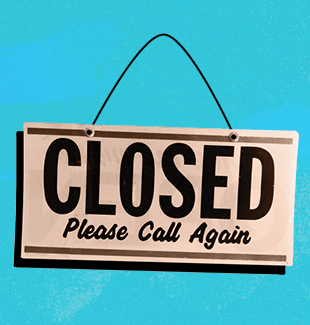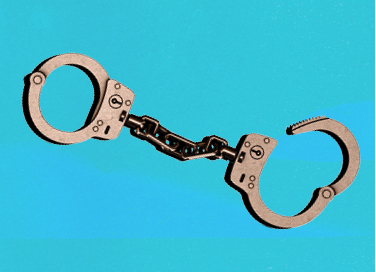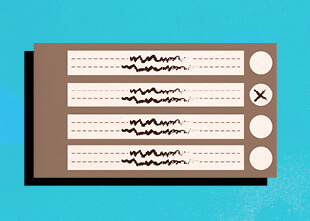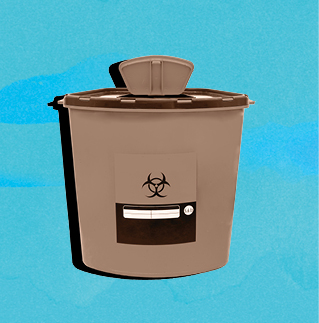

The Canadian Charter of Rights and Freedoms is, by all accounts, an essential part of Canada’s democracy. It’s also celebrated around the world as one of our country’s greatest accomplishments.
Entrenched as Part 1 of Canada’s Constitution on April 17, 1982, the Canadian Charter sets out the rights and freedoms that are guaranteed to every person residing in Canada. And for the last four decades, it has served to protect those rights and freedoms from governmental breaches.
Here, in honour of its 40th birthday, we take a closer look at the role the Canadian Charter of Rights and Freedoms has played—and continues to play—in defending, enhancing, and advancing human rights in Canada and beyond.
Charting the Path
A brief history of how the Canadian Charter came to be.
BY Jessica Wei
Often described as our great national unifier, the Canadian Charter of Rights and Freedoms has come to embody Canada’s independence as a fully self-governing entity from the British government.
But, from the beginning, the new Constitution and its entrenched Charter were less about patriation and more about protecting Canadians from their governments here at home. Before the enactment of the Charter, laws would begin and end with Parliament, with little interference by the courts when it came to potential human rights violations.
As a result, Canada’s history is rife with initiatives designed to oppress minorities, from the 19th century-era Indian Act, to the 1900 Chinese Immigration Act (and associated head tax), to the internment of Ukrainian Canadians in World War I and Japanese Canadians in World War II.
Under the long British tradition of parliamentary supremacy, all of these practices were deemed legal and enforceable. Enacting our own Constitution and entrenching it with a Charter was the only way to protect all people in Canada from the power of the state.
Laying the Foundation
In 1960, the Bill of Rights was enacted by Prime Minister John Diefenbaker. It was a landmark attempt by the federal government to protect the human rights and civil liberties of Canadians. However, it soon proved to be ineffective.
Applying only to federal statutes, the Bill of Rights was missing the crucial participation of the provinces, whose jurisdiction includes school boards, property ownership, municipalities, and natural resources. It was also too limited in the scope of its freedoms, with little flexibility to expand these freedoms. Of the thirty-four Bill of Rights challenges that squeezed past the provincial lower courts and into the Supreme Court between 1960 and 1982, only five were successful. (By comparison, there were sixty-three Charter challenges in 1984 alone, four of which were successful.)
Throughout his multiple terms as prime minister (starting in 1968), Pierre Trudeau thought a great deal about designing a constitution that included both an amending formula and new human rights protections. When he found himself back in the PM seat in 1980, he began this project in earnest.
Getting the Gang (of Eight) Together
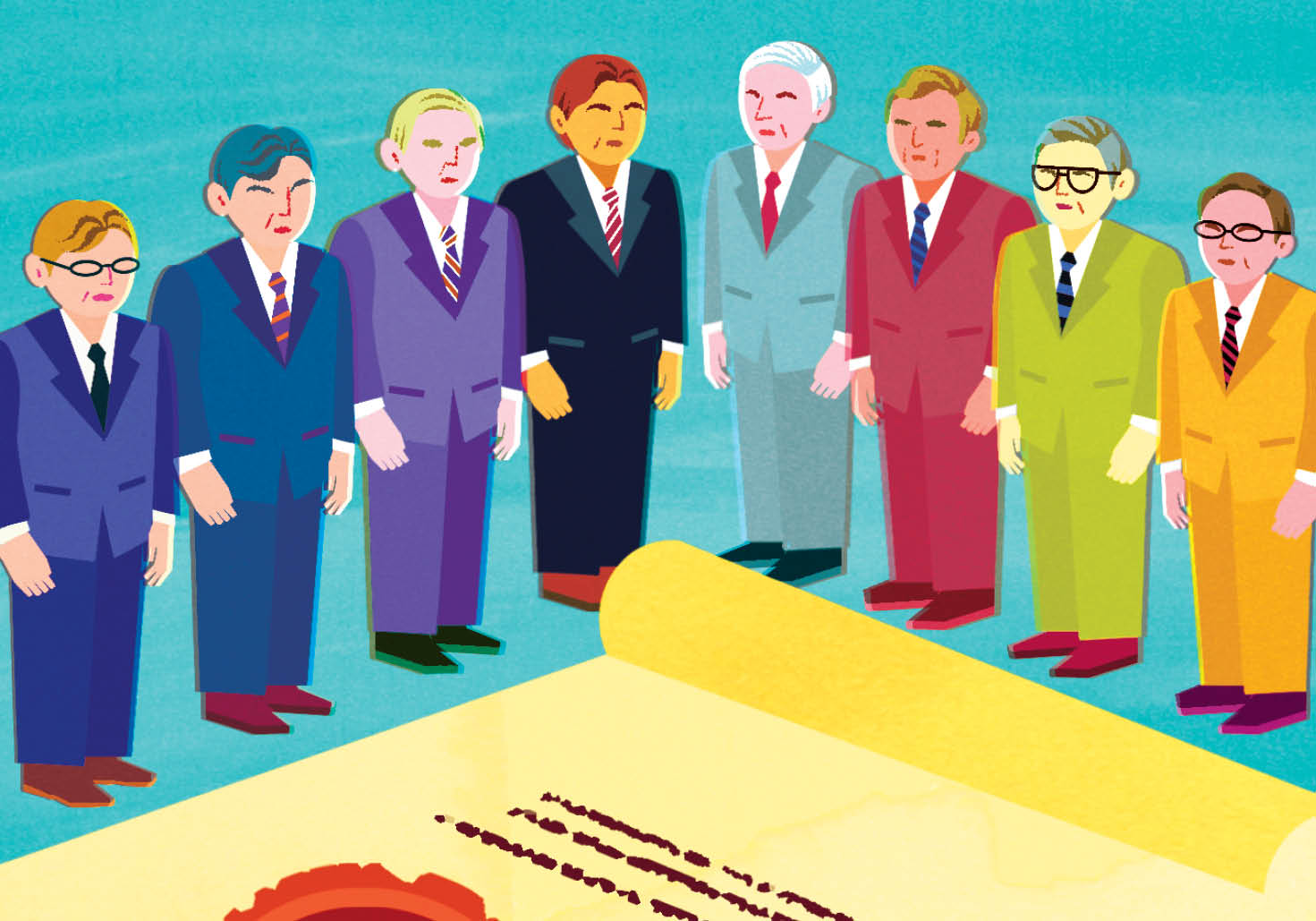
The Charter was introduced during a time of major tension across the country: In 1980, Canada was straining under the shadow of recession, with labour strikes roiling throughout British Columbia. The newly formed National Energy Program, meanwhile, had been introduced in Alberta to nationalize ownership of Canadian oil, driving down competition from American markets and, consequently, oil prices. And under Parti Québécois Premier René Lévesque, Quebec had narrowly avoided a full “Quexit” with “no” winning 59.56 percent of the vote.
While the idea for an amended Constitution plus Charter had the support of the premiers of Ontario and New Brunswick, the other premiers were a harder sell. In their view, adopting a constitutional charter meant relinquishing provincial powers to unelected judges. It also meant unilaterally imposing laws in provinces where they didn’t necessarily make sense—like minority language education rights in either Quebec (where, Lévesque feared, French would be diluted) or B.C. (where French is not commonly spoken).
Although motivated by different goals, the premiers banded together and called themselves the Gang of Eight. They launched a media campaign, lobbied British parliamentarians, and took the federal government to court, appealing the constitutional challenge all the way to the Supreme Court.
In September 1981, the Supreme Court ruled that patriation and constitutional amendment was considered legal but also highly unconventional. Therefore, it required consensus among the provinces.
The Kitchen Accord
Thus began a heated, four-day conference in Ottawa. After three days of ineffective bargaining between the federal government and the premiers, Trudeau’s team—made up of Saskatchewan Attorney General Roy Romanow, Ontario Attorney General Roy McMurtry, and then-Justice Minister Jean Chrétien—met in the kitchen of the Government Conference Centre on the night of November 4-5, 1981, to discuss their final offer.
Led by Chrétien, who was tasked with negotiating and crafting the language of the Charter, the three men jockeyed over clauses and rewrites. It had been made clear that Trudeau wouldn’t budge on the minority language rights, but the trio suspected he might give in on the inclusion of a notwithstanding clause, which allowed federal and provincial governments to temporarily override certain rights in the Charter. Trudeau confirmed their hunches.
Late that night, they dispatched their final offers to the premiers by order of who might be swayed, who could convince a colleague to sign, and who might be asleep or awake while the draft was circulated. Dealings between the groups continued through the wee hours, but Lévesque was notably kept out of the discussions. Feeling betrayed upon learning about them the next day, he would go on to refer to the event as the “night of the long knives.”
But Lévesque’s fury didn’t change the fact that, over the course of that night, an agreement, which came to be known as the “Kitchen Accord,” had been struck. All the provinces save Quebec would accept patriation and a Charter of Rights and Freedoms.
The road to the Charter: a brief timeline
1215
The Magna Carta is signed, outlining basic rights and freedoms for the people of the British Empire.
July 1, 1867
The British North America Act comes into effect in Canada, setting out guidelines for the structure of Canada’s Parliament, including distribution of power.
1960
Canada’s Bill of Rights is enacted, but it has significant limitations.
1980
Prime Minister Pierre Elliott Trudeau is elected for the last time.
May 20, 1980
The Quebec Referendum takes place; Quebec’s secession from Canada is narrowly defeated.
September 28, 1981
The Supreme Court rules in favour of patriation and in Canada’s right to amend its own Constitution without British approval.
November 5, 1981
The Kitchen Accord sees federal representatives and provincial premiers come to an agreement on Charter rights.
April 17, 1982
The Canada Act, 1982, receives royal assent, and the Canadian Charter of Rights and Freedoms becomes an official part of Canada’s Constitution.
June 1990
The Meech Lake Accord, a set of amendments designed in part to gain Quebec’s acceptance of the Constitution, fails to be ratified.
October 26, 1992
The Charlottetown Accord, another attempt by the federal and provincial governments to amend the Constitution, is rejected in a national referendum.
Although motivated by different goals, the premiers banded together and called themselves the Gang of Eight. They launched a media campaign, lobbied British parliamentarians, and took the federal government to court, appealing the constitutional challenge all the way to the Supreme Court.
In September 1981, the Supreme Court ruled that patriation and constitutional amendment was considered legal but also highly unconventional. Therefore, it required consensus among the provinces.
Rewriting Our Rights
With the premiers (except for Lévesque) finally on board, Canada moved swiftly toward its new Constitution. Individuals and citizen groups emerged to lobby for their own interests. The Ad Hoc Committee of Canadian Women on the Constitution reinstated a clause guaranteeing equal treatment and protection between the sexes back into the Charter.
Aboriginal groups also assembled to assert their rights back into the Charter, mounting demonstrations across the country. As a result, Section 35 of the Constitution Act (which is not part of the Charter but begins Part II of the Constitution) includes mention of land claim agreements, gender equality for Aboriginal rights, and participation in constitutional conference, among others.
In April 1982, Queen Elizabeth II signed the Constitution Act, giving Canada control over its Constitution and turning the Charter into law. The Charter would go on to define the values of Canadians and allow the country to cement—with legislative certainty, at every turn—our basic, and evolving, human rights.
What’s in the Charter? A Closer Look.
34
Canada’s Charter of Rights and Freedoms contains just thirty-four sections or clauses.
The first twenty-four sections outline the Charter’s major rights and freedoms. The remaining ten sections pertain to how the Charter works.
How it Works (In a Nutshell)
-
Laws passed by the government cannot violate the rights and freedoms set out in the Charter. If a controversial law is passed, it’s up to Canada’s courts to decide if that law is in violation of Charter rights.
-
The Charter only regulates government and government employees; human rights violations by private entities are not protected under the Charter.
Applicable to All
While Quebec has yet to sign the Constitution, the Charter of Rights and Freedoms still applies to all provinces and territories.
The Notwithstanding Clause
Section 33 of the Charter contains the Notwithstanding Clause, which allows Canada’s federal or provincial governments to pass laws that override certain parts of the Charter for a term of five years or less.
There are seven groups of rights and freedoms protected by the Charter:

Fundamental Freedoms
These include the freedoms of religion, conscience, belief, expression, and peaceful assembly.

Democratic Rights
Individuals have the right to vote in a government election and have their voices heard.

Equality Rights
Everyone has the right to equal protection by the government without discrimination based on race, ethnic origin, religion, sex, age, or disability.

Language Rights
English and French have equal status in all institutes and operations of the government of Canada.

Legal Rights
Anyone in Canada who is investigated, detained, or criminally charged must be treated fairly during legal proceedings.

Minority Language Education Rights
Those who speak the minority language in their province have a right to public schooling in that language, should the numbers allow.

Mobility Rights
Canadians can enter, stay in, and leave the country largely free from government intervention, and can live and work in any Canadian location of their choosing.
Charter Cases that Changed Canadian History
By Elizabeth Chorney-Booth
Most Canadians feel secure in being able to say, do, and be what they please—a sentiment that is ingrained in both Canadian culture and Canadian law. When the Canadian Charter of Rights and Freedoms was entrenched into our Constitution in 1982, the country gained a powerful tool to ensure every individual’s right to equality, free expression, and other liberties.
But a document like the Charter is open to interpretation. Over the last forty years, there have been a number of landmark legal cases—fighting for things like religious freedom, bodily autonomy, and LGBTQ equality—that have made their way to the Supreme Court, all in the name of upholding the human rights provisions set out in the Charter. These are just some of the cases that helped to progress Canadian law and put the letter of the Charter into real-world action.
Big M Drug Mart:
Right to religious freedom (1985)
The Charter is designed to protect religious freedoms of all kinds, including the freedom to avoid common religious customs. In one of the first Supreme Court cases to cite Charter rights, Calgary’s Big M Drug Mart fought against the Lord’s Day Act, a Canadian law that prohibited businesses from operating on Sundays in order to observe the Christian sabbath.
Citing the Charter’s guarantee of freedom of conscience and religion, the owners of Big M felt the Lord’s Day Act was unconstitutional and violated their right to defy Christian doctrine. While the Lord’s Day Act allowed Big M to sell necessities such as medication on Sundays, the store was issued a small fine for selling other items. Similar charges to other retailers had resulted in court battles in the past, but Big M was the first to have the Charter at its disposal. While the fight to stay open on Sundays feels quaint today, it’s considered a major case, opening the door to different Charter-based challenges for decades to come.
David Oakes:
Right to be presumed innocent (1986)
Under the Charter, every Canadian has the right to be presumed innocent until proven guilty in a court of law. When David Oakes was arrested after police found him in possession of cash and hashish oil in London, ON, he claimed the drugs were for his own personal use. Unfortunately for Oakes, under section 8 of the Narcotic Control Act, anyone found with illegal drugs was presumed guilty of trafficking. Consequently, a “reverse onus” was put on him, meaning it was up to Oakes himself to prove he wasn’t intending to sell the drugs.
Oakes argued that the reverse onus was a violation of section 11(d) of the Charter—the presumption of innocence. The Supreme Court of Canada agreed and went on to declare section 8 of the Narcotic Control Act unconstitutional. The case set major precedent for future cases: to this day, courts use “the Oakes test,” a three-part test to determine when government can justify the enforcement of a law that limits a Charter right.
Dr. Henry Morgentaler:
Abortion and the right to liberty and security (1988)
The Morgentaler case is one of the most famous in Canadian history. In 1983, Dr. Henry Morgentaler and two colleagues (Dr. Leslie Frank Smoling and Dr. Robert Scott) were charged with violating section 251 of the Criminal Code for performing “illegal miscarriages” at a clinic in Toronto. At that time, abortion was only legal in Canada at accredited hospitals and for patients who received approval from hospital committees that made their decisions based on medical necessity.
Morgentaler and his colleagues brought their case to the Supreme Court of Canada, citing that federal abortion laws violated Canadians’ rights to security and liberty under the Charter, as the law interfered with patients’ bodily integrity and ability to make their own life-altering decisions. The Court found that section 251 of the Criminal Code violated section 7 of the Charter, leading to the decriminalization of the procedure and making room for clinics to open all over the country.
Little Sisters Book and Art Emporium: Freedom of expression and LGBTQ equality (2000)
Canadians do not have unfettered freedom of expression—while section 2 of the Charter does protect “freedom of thought, belief, opinion and expression,” things like hate speech, obscene materials, and defamation are still often prohibited by various legislation as “reasonable limits prescribed by law.” But those laws can be open to unfair interpretation, which Vancouver’s Little Sisters Book and Art Emporium found out in 2000 when it realized orders of erotic gay and lesbian material shipped from the United States were being turned back by the Canada Border Service Agency (CBSA).
While CBSA agents have the right to prohibit obscene material, the Supreme Court found the store was unfairly targeted because of its LGBTQ audience and that similar heterosexual-focused material did not face similar scrutiny. The store was successful in proving two Charter violations, one against its freedom of expression in importing the material, and the other against its owners’ equality rights as members of the LGBTQ community. The ruling provided precedent for future LGBTQ discrimination cases.
Richard Sauvé:
Protecting the right to vote (2002)
Section 3 of the Charter ensures that every adult citizen of Canada is allowed to vote for members of the House of Commons and a legislative assembly, but inmates have historically been left out of the democratic process. In 1993, a decade after the implementation of the Charter, Parliament granted prisoners serving a term of less than two years the right to vote, still leaving those with longer sentences disenfranchised.
That didn’t sit well with Richard Sauvé, who believed that his democratic rights were as important as anyone else’s despite his substantial prison sentence for murder. Sauvé was successful in challenging Elections Canada’s policy of depriving inmates the right to vote, arguing that the punitive exemption is not necessary to protect the general population’s well-being. The Court reinforced the Charter provision that every Canadian over the age of 18 has a right to vote, also accepting the argument that voting rights instill a sense of personhood and dignity in all citizens, regardless of their criminal status.
PHS Community Services Society:
Access to life-saving services (2011)
In 2003, Vancouver’s PHS Community Services Society made history by opening Insite, North America’s first legal supervised injection site. Insite allows community members to inject narcotics that are prohibited under the Controlled Drug and Substances Act, but the operation was deemed legal through an exemption granted by the federal minister of health. The understanding was that supervised injection sites can significantly reduce cases of HIV/AIDS and Hepatitis C as well as deaths from overdoses.
Insite’s fate came into question in 2008 when a new federal minister of health denied the application for a renewal of the exemption, despite clear evidence that Insite created a positive impact on public health. In its 2011 Supreme Court case, PHS Community Services Society illustrated that closing the site would deprive citizens of potentially life-saving health care, resulting in a violation of the Charter right to “life, liberty, and security of person.” With that ruling, Insite continues to operate, along with dozens of other supervised injection sites across the country.
Living in Disneyland?
Writer and human rights advocate Amira Elghawaby examines
the legacy and future of Canada’s Charter of Rights and Freedoms.

“Iwas once giving a presentation about human rights in Canada to an audience of European advocates at an international conference. As I described the evolution of the interpretation of Canada’s Charter of Rights and Freedoms, and the attempts to balance competing rights, a French activist couldn’t help but blurt out, “That sounds like Disneyland!”
The audience laughed, but he had a point. Coming from a country like France, where the religious freedoms of minority communities are seemingly sacrificed at the altar of a restrictive definition of secularism, the activist couldn’t imagine living in a place that carefully weighed the impacts of laws and policies against its peoples’ constitutionally protected rights.
I’ve told this story many times because it reminds me that, while rights and freedoms are frequently contested, people in Canada are fortunate to live in a place with a solid human rights framework that has evolved over its forty-year history. Yet it’s a foundation that is continually being tested by new and complex questions.
For those interested in the law, the myriad cases involving Charter challenges provide a fascinating window into how the Supreme Court of Canada has weighed the rights of individuals against collective rights over the decades.
The Charter’s protections cover a range of personal rights, including freedom of expression, assembly, democratic participation, freedom from discrimination, presumption of innocence in criminal proceedings, and the right to receive instruction in French or English, among others.
In legal terms, many Charter rights can be described as negative, according to a 2020 legal analysis by Colin Feasby, David deVlieger, and Matthew Huys for the Alberta Law Review Society titled, “Climate Change and the Right to a Healthy Environment in the Canadian Constitution.”
Negative rights restrain the government by limiting what it can do. For example, they require the government to refrain from impeding or violating an individual’s right to express themselves.
Positive rights, meanwhile, could require the government to take action to help fulfill someone’s liberty, like the right to life, liberty, and personal security. For instance, requiring the state to provide a basic income or welfare.
That the understanding and purpose of the Charter can evolve was put forward by Supreme Court Justice Antonio Lamer, who has explained that the historical context of the creation of the Charter back in 1982 should not “stunt its growth.”
Tensions have always existed around the interpretation of rights and the weighing of individual versus collective rights, most recently within the context of public health, climate change, and freedom of expression. At stake is our collective survival and well-being, making the need for more flexible interpretations of the Charter more critical than ever.
For instance, where groups including those representing youth or Indigenous communities have brought forward constitutional climate change claims, they are “objecting to government inaction, not government action. In other words, the constitutional climate change claims are, in essence, positive rights claims. Whether or not the Charter protects positive rights, particularly social and economic rights, is one of the great unresolved questions in Canadian law,” point out Feasby, deVlieger, and Huys.
That the understanding and purpose of the Charter can evolve was put forward by Supreme Court Justice Antonio Lamer, who has explained that the historical context of the creation of the Charter back in 1982 should not “stunt its growth.” In other words, there will be a continuing need to adapt our understanding of how rights ought to be protected.
Furthermore, Canada’s international obligations add another layer to ensuring a more nuanced or expansive view of our Charter rights, especially amid the global challenges brought on by the COVID-19 pandemic. As lawyers Marie-Claude Landry, Chief Commissioner of the Canadian Rights Commission, and Isha Khan, CEO of the Canadian Museum of Human Rights, argue in a joint essay marking Human Rights Day last year, the Universal Declaration of Human Rights (UDHR) itself provides guidance on how to balance individual freedoms against collective rights.
“Conspicuously overlooked is Article 29 [of the UDHR], which adds crucial context,” write Landry and Khan. “Article 29 recognizes there will be times like this when reasonable limits on individual freedoms are necessary for the collective good. Protecting the public from a deadly pandemic is certainly important to our global health and to our shared humanity.”
Section 1 of Canada’s Charter provides a similar caveat, of sorts: freedoms are not absolute and there can be reasonable limits where the collective requires it. Yet the Charter’s notwithstanding clause is also a risk to communities justifiably concerned over the suspension of their human rights for political gain.
Within the past several years, provincial governments have used the notwithstanding clause to cancel basic civil liberties, including those relating to religious freedoms, language, and democratic participation.
While Human Rights Watch documented at least eighty-three governments that violated the exercise of free speech and peaceful assembly with COVID-19 as their pretext, here in Canada, there has been little done to rein in harmful efforts to propagate conspiracy theories and smear politicians and public health officials, promote false information about legal rights, and spread hatred online and off.
The Charter itself has not been immune to that misinformation.
“COVID-19 is not the only pandemic that is threatening Canada. So too is the spread of misinformation and disinformation about Canadians’ legal rights. Any argument that the Charter contains absolute rights is false,” write legal scholars Jeffrey B. Meyers, Emily Dishart, and Rose Morgan in a February 2022 article for The Conversation.
Misunderstanding and ignorance weaken general literacy about legitimate Charter rights and have a negative impact on our appreciation and exercise of such rights.
Not only then should we be preoccupied with how the Charter’s evolving interpretation will protect our individual and collective rights, but we should also be deeply concerned about how more misunderstood and misinterpreted it may yet become. With false narratives abounding about the robbing of personal freedom whenever governments bring in health, climate, or other types of regulation, such weaponization of the Charter sets our communities up for a showdown that isn’t based on facts.
We can’t take Disneyland for granted.
For more information on the 40th Anniversary of the Canadian Charter of Rights and Freedoms and other anniversaries of significance in Canada visit https://www.canada.ca/en/canadian-heritage/services/anniversaries-significance.html.
Illustrations:
Photo:
iStock.com/istockphoto.com/asikkk
